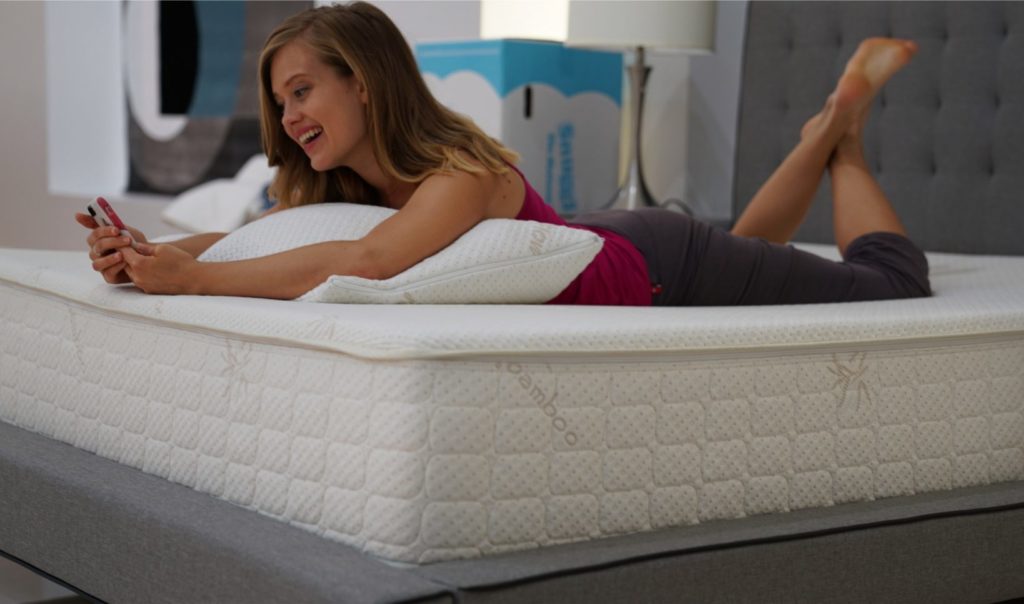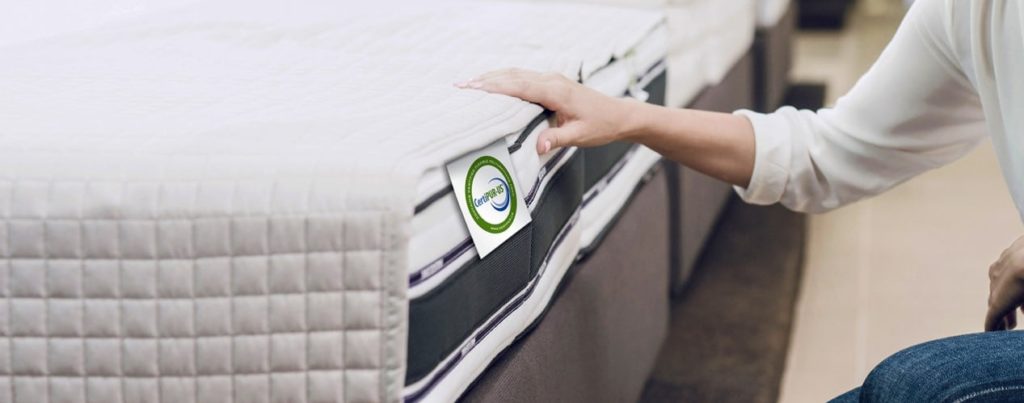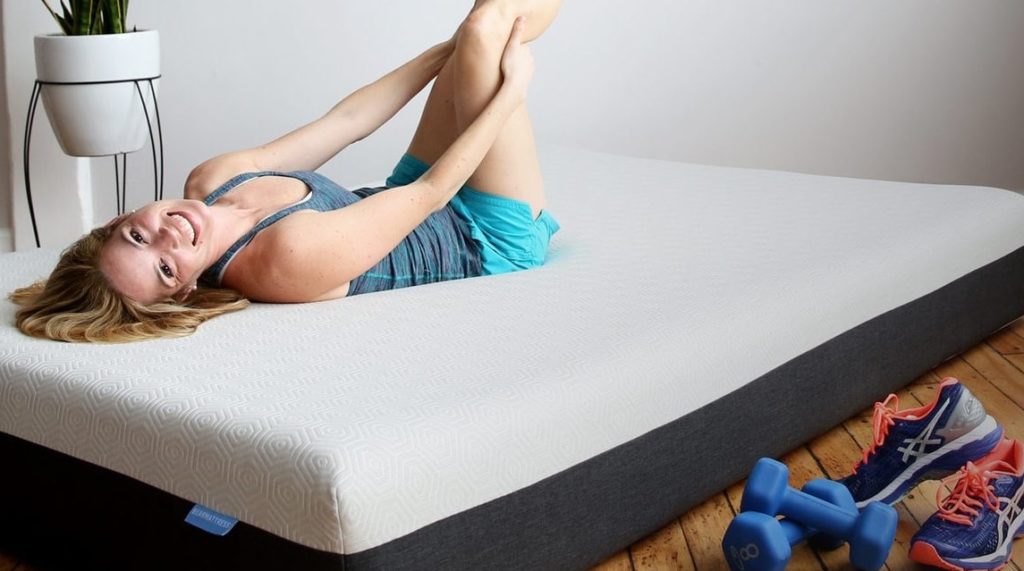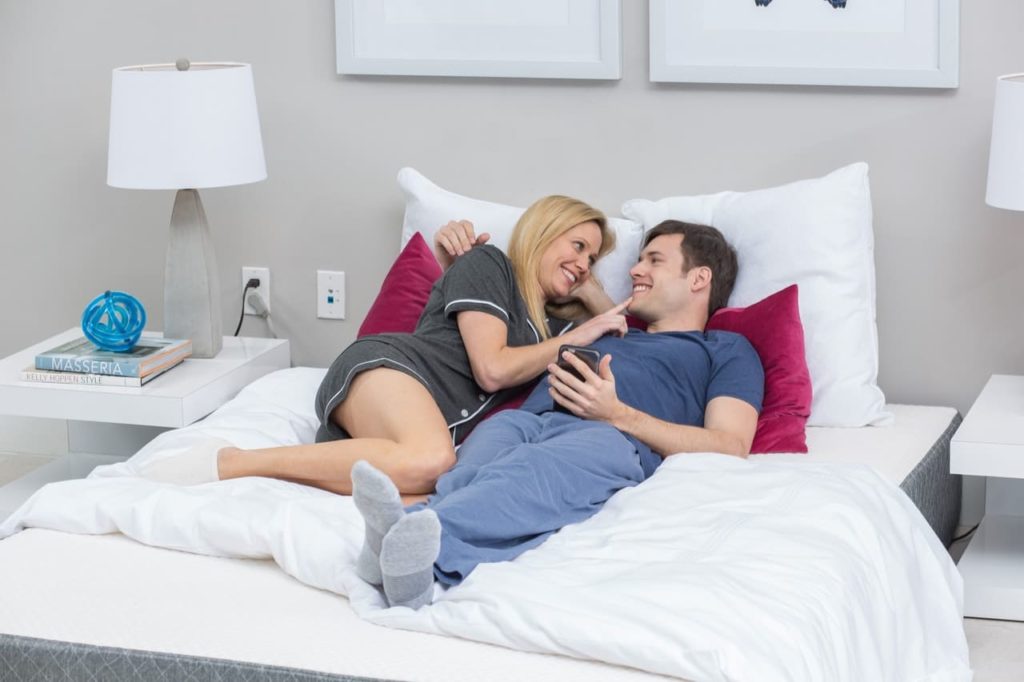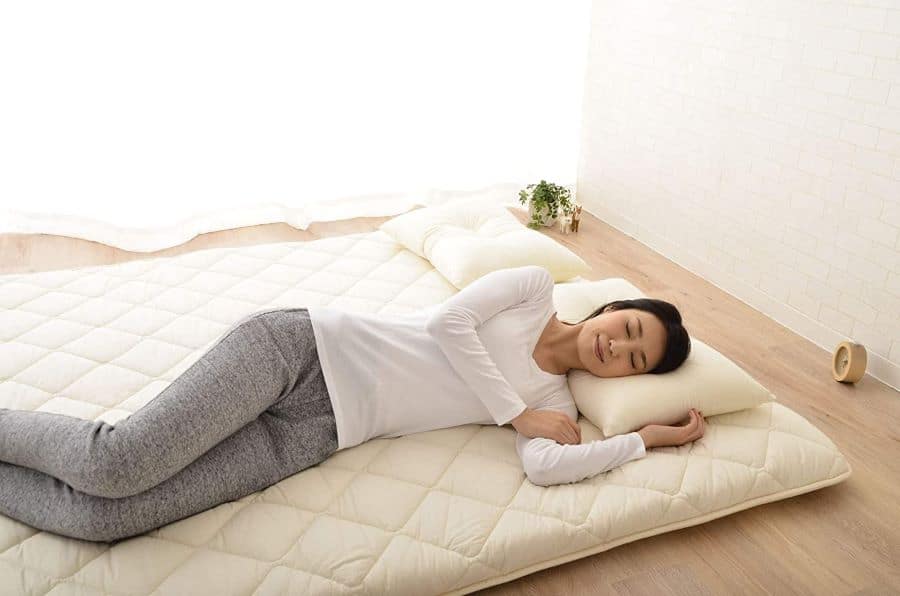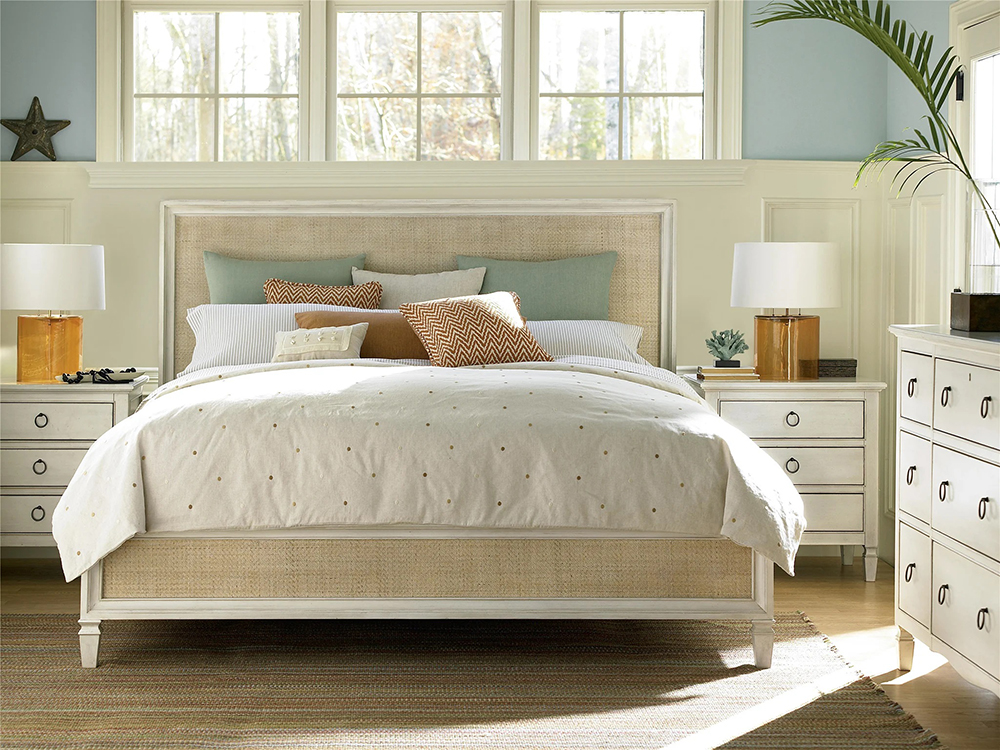

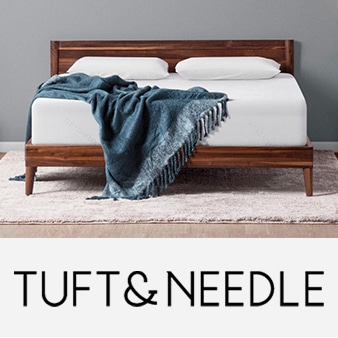
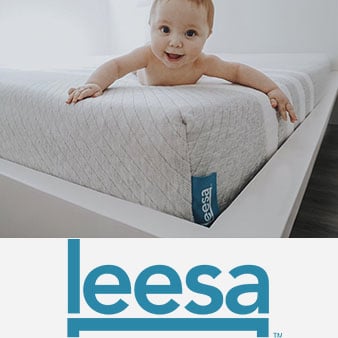
There are a lot of direct-to-consumer mattresses companies around these days and deciding which one deserves your business can be difficult. That’s one reason why we put together this Tuft&Needle vs. Leesa comparison. Both companies were driven to improve the mattress business by reimaging what a comfortable mattress could be and seller straight to consumers at the most affordable price possible. Leesa remains a small company operating out of Virginia Beach while Tuft & Needle has merged with Serta Simmons to transform the mattress industry on an even larger scale.
But what about the mattresses? When it comes to Leesa vs. Tuft&Needle, both are versatile, durable, and affordable. These mattresses are designed to appeal to sleepers of all different shapes and sizes in any sleeping position. So, who comes out on top: a small company determined to change the way you sleep or an ambitious startup that partnered with one of the most famous names in the business to change the industry across the board? Let’s find out.
| Tuft&Needle | Leesa |
|
|
| VIEW ON AMAZON | VIEW ON AMAZON |
| Tuft&Needle | Leesa | |
| Type | Foam | Foam |
| Firmness | Medium-firm (6.5) | Firm (7.0) |
| Thickness | 10″ | 10″ |
| Weight | 71 lbs | 76 lbs |
| Sleep trial | 100 nights | 100 nights |
| Warranty | 10 years | 10 years |
| Price | $595 (Queen) | $890 (Queen) |
| Certification | Greenguard Gold Standard 100 by OEKO-TEX Certi-PUR-US |
Certi-PUR-US |
| Tuft&Needle | Leesa | |
| Support core | 7″ 1.8 PCF HD polyfoam | 6’’ Dense Core foam |
| Comfort layers | 3″ 2.8 PCF polyfoam | 2’’ LSA200TM foam 2’’ memory foam |
| Cover | Micro polyamide and polyester | Dual-layer stretch polyester |
As you can see, there are a lot of similarities between these two mattresses. They’re both made of foam, weigh about the same, include a 100-night sleep trial, and are covered by a 10-year warranty.
But there are some differences, too. While they’re both 10 inches thick, they differ in the number of materials as well as what kind of foam they use. The biggest difference, though, it the price tag. For example, the Leesa queen-sized mattress costs roughly $300 more than the Tuft & Needle.
There are a lot of things that contribute to how comfortable a mattress is. On paper, these two look pretty similar, but there are some significant differences between them. Let’s take a closer look at the things that make a mattress comfortable and how each of these mattresses holds up.
The Tuft & Needle mattress is rated 6.5 or medium-firm. It’s made up of a seven-inch layer of high-quality support foam and a three-inch layer of comfort foam that’s infused with gel and graphite with a plush, breathable cover. This mattress conforms a little better to your body than most polyfoam mattresses. It provides more pressure relief, making it a good choice for people with back pain.
Compared to the Tuft & Needle Mattress, the Leesa Mattress has two comfort layers instead of one. Combined, the two inches of LSA200 foam and two inches of memory foam are an inch thicker than the Tuft & Needle as well. That said, the dense core foam support core is an inch thinner. What does this mean for comfort? The Leesa is rated a 7 on the firmness scale, just slightly edging out its competitor. It’s also good for back pain and provides a decent amount of support.
Despite the gel infusion in the top comfort layer, a lot of people claim that the Tuft & Needle mattress sleeps pretty hot. The Leesa does a little better job of keeping sleepers cool, perhaps because the polyester cover is a little more breathable.
That said, keep in mind that, in general, foam mattresses tend to sleep warm so you’ll likely get a little heat retention from either of these mattresses.
Foam mattresses are all really effective at preventing motion transfer because they don’t have springs. The Tuft & Needle mattress is really effective at preventing motion transfer and is very quiet, so you don’t have to worry about waking up your partner if you get in and out of bed in the middle of the night.
The Leesa mattress performs very well in this area. In fact, it performs above average when compared to other foam mattresses.
If foam mattresses are great at preventing motion transfer because of the lack of springs, then they’re not very responsive for the same reason. Springs just have more bounce than foam. Both the Tuft & Needle mattress and the Leesa mattress are pretty every when it comes to responsiveness. They both have a little bit of bounce but not as much as you might expect.
Resilience and bounce are different to responsiveness in that responsiveness usually depend on the performance of the entire mattress from top to bottom. Resilience and bounce, on the other hand, apply to how quickly the mattress regains its shape when you push onto it. Both have a pretty good recovery and regain their shape quickly, though the Tuft & Needle mattress has a slight edge.
When it comes to edge support, the Tuft & Needle mattress leaves a lot to be desired. In fact, a lot of people claim this mattress has no support at all. If you sleep with a partner who tends to take up a lot of their side of the bed, this might not be the best mattress for you. The closer you sleep to the edge, the easier it is to roll off.
The Leesa mattress doesn’t provide much edge support, but it does have a slight advantage in this area.
Because the Tuft & Needle mattress uses polyfoam rather than memory foam, it has less off-gassing, and the smell dissipates rather quickly.
The Leesa mattress does have a comfort layer made of memory foam, so it has a little bit more off-gassing than the Tuft & Needle but, overall, much less than a standard memory foam mattress.
| SLEEP POSITION | Light sleepers(less than 130 lbs) | Average sleepers(130 lbs to 230 lbs) | Heavy sleepers(greater than 230 lbs) |
| Tuft&Needle | |||
| Side | 7 | 9 | 8 |
| Back | 9 | 8 | 9 |
| Stomach | 7 | 8 | 8 |
| Leesa | |||
| Side | 7 | 9 | 9 |
| Back | 9 | 10 | 10 |
| Stomach | 8 | 9 | 9* |
Out of ten*
When it comes to sleeping position and how much the sleeper weighs, these two mattresses are very similar. While the Leesa does have a slight edge in all categories, it’s close enough that you might really want to think if it’s worth spending the extra money when Tuft & Needle performs so well.
| SIZE | Tuft&Needle | Leesa |
| Twin | $350 | $425 |
| Twin XL | $395 | $590 |
| Full | $495 | $750 |
| Queen | $595 | $890 |
| King | $750 | $1090 |
| California King | $750 | $1090 |
| Sleep trial | Warranty and refund | Delivery | Trade-in | |
| Tuft&Needle | 100 nights | 10 years | Full | Within the U.S. |
| Leesa | 100 nights | 10 years | Full | Within the U.S. and most of Canada |
Both of these mattresses come with a 100-night in-home sleep trial, which is a great way to really try them out before making up your mind.
Leesa asks you to try the mattress for at least 30 nights to give yourself time to adjust to a new mattress before making up your mind. If you decide you don’t like it, they’ll pick it up from your home for a small fee and refund the purchase price.
Tuft & Needle doesn’t have a requirement for a minimal number of nights for their 100-night trial though they require you to contact them to arrange shipment via FedEx. They will refund the purchase price once they receive the mattress from you. This is fair but not as simple as a return policy as the one offered by Leesa.
Leesa mattresses have a 10-year limited warranty. It covers visible indentations greater than one inch or physical flaws in the craftsmanship that causes damage despite proper use. They’ll also replace the cover if there is any problem with the seams or zipper. The warranty does not cover normal wear and tear, including softening or physical damage like cuts, tear, or burns. You also have to be sure you use a frame that offers proper support. Using the wrong frame or foundation voids the warranty.
As for Tuft & Needle, they also offer a 10-year limited warranty. It covers visible dents greater than ¾ inch in the foam that are visible when no weight is applied to the mattress. Flaws in the material that lead to splits or cracks are also covered as well as fabric tears or unraveled stitches. The warranty doesn’t cover normal wear and tear or commercial use or minor defects that wouldn’t stop a reasonable person from enjoying the mattress. Again, if you do not use a firm, solid support structure, the warranty will not apply.
Leesa mattresses ship for free using UPS Ground in all 50 states. They arrive compressed in a box and should be opened for expansion within 30 days of receiving the mattress.
Tuft & Needle offers a few shipping options. Same-day shipping is available in certain zip codes, including New York City, San Francisco, Los Angeles, and Seattle with a $50 delivery charge. Standard shipping in the US is free, and they use FedEx Ground as the carrier. Finally, they have a white-glove delivery option for a fee of $150. This service includes in-home setup of your new mattress and removal of the old one. The $150 fee applies even if you do not have an old mattress to remove.
Leesa allows customers to upgrade to another product in the event of exchange by paying the difference between the item being returned and the more expensive item. The new item is covered by a new warranty.
For Tuft & Needle, if you end up not liking the mattress during the 100-night trial or have a valid warranty claim, you can trade it in and apply the purchase price to another product. Keep in mind, though, that this voids the sleep trial for the new product as each customer is only eligible for one trial.
Pros
Cons
Pros
Cons
This is a tough call. Although these mattresses are very evenly matched, the Leesa has just a slight advantage when it comes to edge support, heat retention, and support for sleepers across the board, regardless of size and sleeping position. Leesa also has a more convenient return policy. But it’s also more expensive than the Tuft & Needle.
The differences between the two are very slim, so it’s up to you to decide if you want to spend a little more money for a mattress that only has a slight edge over its competition.
